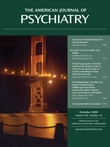There is a sense in the academy that the glass ceiling has been shattered. That after years of hard work and shifting ideologies, we have experienced the last gasps of chauvinism, and women have finally achieved equality with men. For example, one could note that nearly half of all Ph.D.’s and U.S. medical students are women. However, despite these advances, many women still find that their academic careers are in competition with their personal lives. In this book, Dr. Maike Ingrid Philipsen addresses this imbalance by interviewing 46 women faculty members about their successes, their sacrifices, and the state of the academy.
In her exploration of women in academia, Dr. Philipsen incorporates both qualitative and quantitative data on the issue of gender. The women who were interviewed speak candidly about matters of gender, occupation, and family. They openly share about the institutionalized philosophies that have prevented them from easily balancing the rigors of academics with the time crunch of their personal lives. And although the book specifically focuses on the troubles and triumphs of female scholars, their experiences are relevant to anyone who is concerned with the shape of academic life in the 21st century.
This book is all the more compelling because of its well-written, engaging writing style and the unique diversity of its respondents and research methods. It is easily readable and consists of ongoing authorial commentary, a survey that was generated from the interviews, and short interview excerpts. The excerpts are from women Philipsen interviewed as part of a qualitative study of women’s attitudes concerning their academic and personal lives. In designing her study, Philipsen consciously attempted to interview women with a wide array of academic and personal experiences. Therefore, Challenges of the Faculty Career for Women includes input from women in a variety of career stages (early-, mid-, and late-career), who are a variety of ethnicities, work in a variety of school types (private comprehensive, community, metropolitan, small historically black, and flagship public universities) and disciplines (e.g., the sciences, the arts, the humanities, and professional programs), and live a variety of lifestyles (e.g., single, married, and with or without children). Philipsen arranges the book according to the women’s career stage—first, she shares insights from young tenure-track Ph.D.’s; next, the mid-career faculty; and finally, the full professors, the pioneers. The book concludes by comparing the perspectives of these women and by offering recommendations for transforming the organizational culture of academia to better accommodate the many issues that they discuss.
The personal stories of the women Philipsen interviewed propel readers through the common threads that the interviewees share and thereby help elucidate the many interconnected problems that currently afflict academia. Indeed, their well-spoken, keen analysis of the system, their frustrations, and their personal tragedies bring the problems of academia alive. Philipsen asks her interviewees to share their achievements and coping strategies, and she also provides a potential framework for reforming the system. She convincingly argues that institutions should avoid the knee-jerk reaction of designing women-specific policies or even encouraging the countertrend of stay-at-home dads. Instead, she calls for the provision of basic institutional support for faculty, such as child care, and for the clarification of that dark mystery that we know as the tenure process by providing several clear, yet flexible, promotion models.
Of course, Challenges of the Faculty Career for Women is not without its faults. For all its diversity, some readers might find their own perspective underreported. For example, in the section about early-career women, Philipsen spends nearly twenty pages discussing the troubles of married life, but only speaks about the single life for six pages, and even then she mostly focuses on the women’s perceived prospects of future families. Likewise, the book lacks the potentially informative perspective of women who no longer work in the academy. Philipsen herself suggests that “it would be very interesting to conduct a study with those who left academia, were not tenured, or were unable to acquire an academic position. Those voices remain unheard.”
A unique characteristic of the book is its combination of qualitative and quantitative work. In addition to conducting personal interviews, Philipsen includes a quantitative analysis by her colleague Timothy Bostic. In the book’s appendix, Bostic summarizes survey results in another sample of early- (N=46) and mid-career (N=44) academicians on ratings of institutional support and personal sacrifices. The main limits to these quantitative analyses are a small sample size and the fact that respondents were not systematically recruited. Thus, although Bostic’s findings are interesting in that they suggest that the experiences of early- and mid-career women faculty are similar, truly understanding the perceptions of women faculty will require more in-depth, rigorous studies.
Ultimately, this book is important conversation kindling for our generation of academics. As Philipsen notes in her conclusion, women faculty need to recognize that they are not alone in walking this tightrope of academic and personal success. We all need to strive toward the transformation of the outmoded structures and mind-sets that still form the hidden foundation of our university system. Because these foundations and assumptions are perceived as essential to the survival of the academy as we know it, it will take the active cooperation of many men and women leaders working together to break the glass ceiling.

